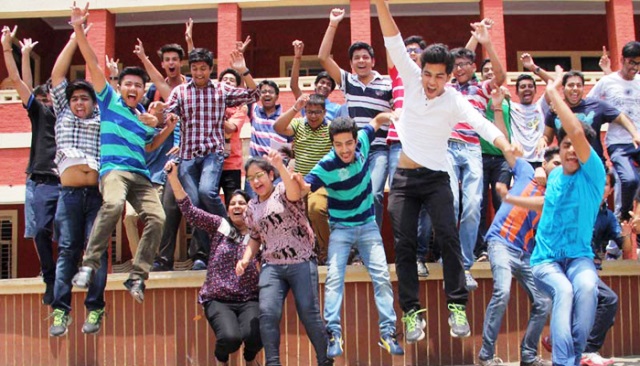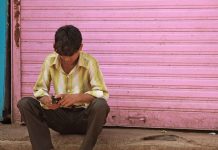The topic of discussion today involves the growing culture of systemic violence prescribed within the utopian dream of contemporary liberalism. Liberalism from the outset envisages a socio-political zeal against which it lays its grievances It brings an individual, You, to the epicenter of its politics. It dignifies an individual and the eccentricity of his choices. It therefore becomes important to understand the cost that this utopian zeal carries. Contemporary liberalism claims to deal majorly with civil rights and social equality. While it could be said that much has been done with regard to the antiquities of the former, the latter is still invisible in the spectrum.
Liberalism brings forth a culture of peaceful co-existence. It exchanges fear for freedom. It stimulates a fear of outrage against any attempt of intruding the purported Other’s personal space. The Other should be left alone to himself. My reservations about such a policy is how does it lead to moderation?
The individual, according to the liberalist policy, when he is raised to the bar of being sufficiently human, he is untagged from being in any form the Other. The relationship between the I and the Other which was used before in any way that deemed fit to an individual(as a medium of oppression), is now completely dissolved. An individual here is trapped in a shell where he is allowed to sufficiently “be himself”.
Moderation was impossible both then and now. It could be said now that liberalism has laid siege on the politics of war through cultural anonymity. The result of such politics is that via the epicentre of liberalism, the outrage has shifted on its extremes. Against the background of liberalism, every form of language carries within it a symbol that is “extreme”; quite similar to how only against the backdrop of non-violence can something be deemed violent. As a result, the world is increasingly licensed to polarity – one is either conservationist or leftist, hypocrite or ideologue, atheist or religious, success or failure, and similar such.
An individual in this liberalist culture and in this digital information age, lives in a virtual simulacrum. He conjures up a reality in which his desires are materialized. His narcissistic attitudes are met with the culture of tolerance and sympathy. Call it aesthetic hedonism, would you? It is a culture of susceptible violence. It is a culture in which the Other in you is always vulnerable. Why, you ask? Because the increasing sensitivity has never given way to moderation. A world that aspires to achieve inter-communal harmony and inter-communal growth, cannot ask for a petty thing as righteousness (which is what a liberal culture promotes), but must ask for a struggle.
The bullying culture (lawful one, not one that involves any physical brawl): does it not, within language, carry a substratum of a conversation between I and the “other”? Does it not carry within it a struggle for moderation? But instead we, in this simulation of immortality, of sustaining narcissism, have fallen into infinite ideologies and infinite victimization. This simulation and its immortality also thrive in fear. It submits to the violence that thralls upon him through language. This non-confrontational attitude is only leading to growing insecurities. Facebook, Instagram, twitter; these social media websites make revenue of your insecurities, of the bipolar culture.
To give a further account of the relationship between immortality and fear and evil, I will take an example from the archives. In his book, Leftism in India, 1917-1947, Satyabrata Rai Chowdhuri describes the evolution of leftism in the national movement of Independence’s struggle. The First World War witnessed a crack in the perceived mightiness of the British Empire. The fighting Indian soldiers in the war, consisting mainly of peasants and other proletariat members, saw the empire suffering major blows, crumbling in front of them. He writes that the witnessing of this event mobilized the proletariats for the cause of independence by disillusioning them from the perceived “immortality” of the British. The fear was won upon. The symbols differed now. But initially it was the symbol of immortality that was the root of fear, the root of evil. It was only through the recognition of the other’s mortality that the fear lost its root in language and the struggle for independence and equality began. Egalitarianism was always present; it was equality that was vouched for. In this current crisis of immortality in the simulation, it is fear that is the prime evil. Egalitarianism is opportune here. Equality is achieved in hostility.
An individual in this simulation always desires to be someone and something. Like our attitude towards fame and validation. The grass is greener on the other side. The same language that carries the symbols of success, carries the symbol of fear. The fear acts when the provocateur like language measures an individual against the establishment of success. Success lures in the background. It is violence in its Other form. Violence that is systemic.
The capitalist manifesto, if I may say, has already placed its bets—just not on you, but the Other. The end goal of capitalism is not just possessing the object of desire, but enjoying the object as much as the Other, or simply off-putting the very object itself as problematic. The cause for social equality here is met not on grounds of exercising one’s freedom, but on curtailing other’s individual freedom, by a manner of prohibition—a sacrifice to prevent the enjoyment of the Other such that, in the words of Zizek, “everyone’s access to jouissance is equal”. In a way as opposed to egotism(a primitive form of self-love) where one is focused on the pursuit of desire, here he prohibits his desire and makes his desire, as Lacan puts it, the “desire of the other”. The itinerary for justice and accountability takes the manner of asceticism like is seen in the evolving dynamics of men and women. The establishment of female representation and opportunism today takes the form of pride in men. This is the motto of the current form of social equality—a socio-political zeal where everyone’s access to jouissance is equal. Social equality in such a state is a disability.
We have lost the ability to reason in the being of “suffering”. Violence needs to be analyzed beyond mere victimization and has to be studied through language. How do we use language? What are the symbols underlying hate? We need to look beyond the explosive subjective violence; those random outbursts of violence against community or an individual; and search for the objective systemic violence within. Love is said to be an ordeal between the lover and the beloved. The liberal culture, in its utopian dream, exterminates the ordeal; thereby preaching hostility instead of love.










